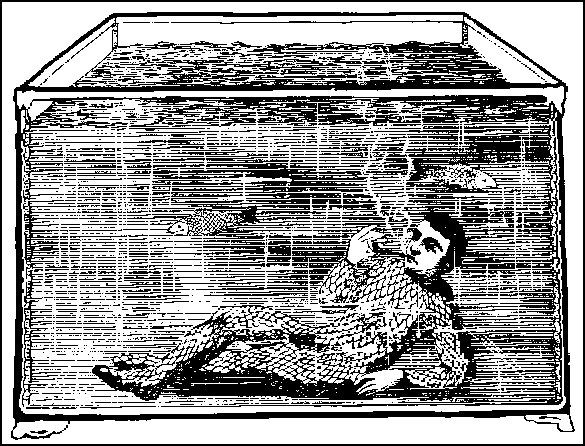Starmaker
Olaf Stapleton
(Wesleyan University Press)

Now that I am happily settling into second childhood, I am remedying this gap in my miseducation, and have just finished Stapleton's The Starmaker. It was originally published in 1937 has been recently reissued by Wesleyan University Press with a typically thought-provoking forward by Freeman Dyson, who obviously loved Stapleton's fantasies in his own youth. It also contains fawning, idiotic footnotes by another enthusiast named Patrick McCarthy.
Stapleton's concerns are at once psychological and metaphysical. To pose questions about the nature of mind and the nature of society, he invents an immense galactic history of a jillion different planets, surveyed by a narrator who simply floats into them by some ill-defined kind of telepathic tourism. We forgive this clunky fictional gimmick because these histories are so interesting. One of my favorites is the world inhabited by "nautiloids," a species which evolved as follows:
- A mollusk-like creature, living in the coastal shallows, acquired a propensity to drift in its boat-like shell on the sea's surface, thus keeping in touch with its drifting vegetable food. As the ages passed, its shell became better adapted to navigation. Mere drifting was supplemented by means of a crude sail, a membrane extending from the creature's back. In time, this nautiloid type proliferated into a host of species. Some of them remained minute, but some found size advantageous, and developed into living ships. One of these became the intelligent master of this great world.
 The hull was a rigid, stream-lined vessel, shaped much as the nineteenth century clipper in her prime, and larger than our largest whale. At the rear a tentacle or fin developed into a rudder, which was sometimes also used as a propeller, like a fish's tail. But though all these species could navigate under their own power to some extent, their normal means of long-distance locomotion was their great spread of sail. The simple membrane of the ancestral type had become a system of parchment-like sails and bony masts and spars, under voluntary muscular control. Similarity to a ship was increased by the downward looking eyes, one on each side of the prow. The mainmast head also bore eyes for searching the horizon.
The hull was a rigid, stream-lined vessel, shaped much as the nineteenth century clipper in her prime, and larger than our largest whale. At the rear a tentacle or fin developed into a rudder, which was sometimes also used as a propeller, like a fish's tail. But though all these species could navigate under their own power to some extent, their normal means of long-distance locomotion was their great spread of sail. The simple membrane of the ancestral type had become a system of parchment-like sails and bony masts and spars, under voluntary muscular control. Similarity to a ship was increased by the downward looking eyes, one on each side of the prow. The mainmast head also bore eyes for searching the horizon.
...It may seem strange that a species of this kind should have developed human intelligence. In more than one world of this type, however, a number of accidents combined to produce this result. The change from a vegetable to a carnivorous habit caused a great increase of animal cunning in pursuit of the much speedier submarine creatures. The sense of hearing was wonderfully developed, for the movements of fish at great distances could be detected by the underwater ears. A line of taste-organs along either bilge responded to the ever-changing composition of the water, and enabled the hunter to track his prey. Delicacy of hearing and of taste combined with omnivorous habits, and with great diversity of behaviours and strong sociality, to favour the growth of intelligence.
It was a strange experience to enter the mind of an intelligent ship, to see the foam circling under one's own nose as the vessel plunged through the waves, to taste the bitter or delicious currents streaming past one's flanks, to feel the pressure of air on the sails as one beat up against the breeze, to hear beneath the water-line the rush and murmur of distant shoals of fishes, and indeed actually to hear the sea-bottom's configuration by means of the echoes that it cast up to the under-water ears.

 If you have guessed correctly, then you will not be surprised by the next part of the story. "I must not stay to tell of the desperate struggle which broke out between these two kinds of social organizations."
If you have guessed correctly, then you will not be surprised by the next part of the story. "I must not stay to tell of the desperate struggle which broke out between these two kinds of social organizations."